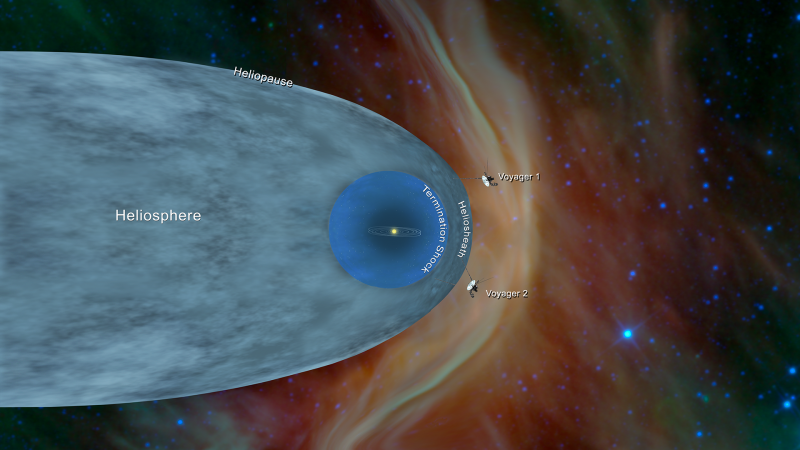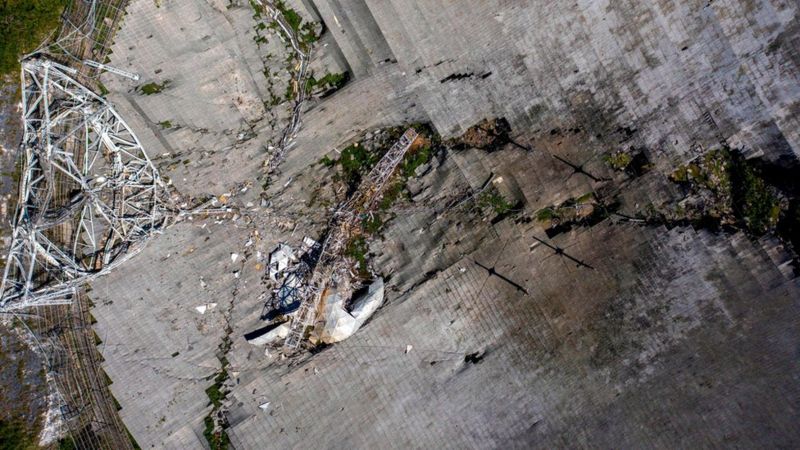 |
  |

10-28-2020, 11:49 PM
|
 |
I read some of your foolish scree, then just skimmed the rest.
|
|
Join Date: Jan 2005
Location: Bay Area
Gender: Male
|
|
 Re: Drive by science
Re: Drive by science
Sometimes the youtube algorithm is kind and brought me this, a Soyuz launch to the ISS as seen from the station. The mission docked two days later.
|

10-30-2020, 06:35 AM
|
 |
mesospheric bore
|
|
Join Date: Jul 2005
Location: New Zealand
Gender: Male
|
|
 Re: Drive by science
Re: Drive by science
|

10-30-2020, 03:50 PM
|
 |
Admin
|
|
Join Date: Apr 2004
Location: Ypsilanti, Mi
Gender: Male
|
|
 Re: Drive by science
Re: Drive by science
That works on so many levels.
|

11-01-2020, 04:24 PM
|
 |
I read some of your foolish scree, then just skimmed the rest.
|
|
Join Date: Jan 2005
Location: Bay Area
Gender: Male
|
|
 Re: Drive by science
Re: Drive by science
TIL: Cyanide does not smell like almonds. It in fact smells like *bitter* almonds, which look like normal almonds but contain cyanide, which gives them their smell, making it a bit like saying cyanide smells like cyanide. Cyanide actually smells like a strongly chlorinated pool.
Cyanide containing bitter almonds are of course sold as an alternative medicine cure all.
|

11-07-2020, 11:58 AM
|
 |
Solipsist
|
|
Join Date: Jul 2004
Location: Kolmannessa kerroksessa
Gender: Male
|
|
 Re: Drive by science
Re: Drive by science
Voyager 2 has been unable to get messages from Earth since March this year. The only place capable of sending it messages, DSS43 in Canberra - the only part of the Deep Space Network that has line of sight to where Voyager 2 is - had to be taken offline for repairs. Data could still be received by other stations but they couldn't send commands.
On 29 October contact was reestablished! Hello Voyager 2!
NASA contacts Voyager 2 using upgraded Deep Space Network dish
NASA re-establishes contact with Voyager 2 spacecraft | Human World | EarthSky

Voyager 2 left Earth in August 1977 and is now 18,300,000,000km away or over 120 times as far away as the Sun. The round-trip communications delay is 35 hours.
It's in interstellar space, ie beyond the bubble of solar wind from the Sun. But still within the solar system - apparently has not even reached the inner edge of the Oort Cloud yet.
|

11-12-2020, 03:16 PM
|
 |
forever in search of dill pickle doritos
|
|
|
|
 Re: Drive by science
Re: Drive by science
|

11-12-2020, 04:46 PM
|
 |
Solipsist
|
|
Join Date: Jul 2004
Location: Kolmannessa kerroksessa
Gender: Male
|
|
 Re: Drive by science
Re: Drive by science
We already have humans who enjoy throwing shit at visitors. What are they hoping to achieve?
|

12-01-2020, 05:00 AM
|
 |
Shitpost Sommelier
|
|
|
|
 Re: Drive by science
Re: Drive by science
__________________
Peering from the top of Mount Stupid
 
|

12-01-2020, 07:26 PM
|
 |
puzzler
|
|
Join Date: Aug 2004
Location: UK
|
|
 Re: Drive by science
Re: Drive by science
The iconic Arecibo Radio Telescope in Puerto Rico has collapsed. A couple of the support cables had broken a few weeks ago, and it had been announced that there was no safe way to repair the telescope, so it was already scheduled for demolition. Now it's collapsed I suppose that removes one element of the demolition process. No one has been reported injured.
 BBC article
BBC article
__________________
|

12-03-2020, 10:37 PM
|
 |
puzzler
|
|
Join Date: Aug 2004
Location: UK
|
|
 Re: Drive by science
Re: Drive by science
__________________
|

12-04-2020, 03:33 AM
|
 |
Shitpost Sommelier
|
|
|
|
 Re: Drive by science
Re: Drive by science
__________________
Peering from the top of Mount Stupid
 
|

12-04-2020, 09:07 AM
|
 |
Solipsist
|
|
Join Date: Jul 2004
Location: Kolmannessa kerroksessa
Gender: Male
|
|
 Re: Drive by science
Re: Drive by science
Ooh. Vision for perception vs vision for action. Deep.
|

12-19-2020, 11:20 PM
|
 |
I read some of your foolish scree, then just skimmed the rest.
|
|
Join Date: Jan 2005
Location: Bay Area
Gender: Male
|
|
 Re: Drive by science
Re: Drive by science
Recently I’ve managed to catch multiple rocket launches live thanks to the magic of youtube, I don’t think we’ve had a SpaceX mention recently and they just made a great fireball!
The plan:
Shiney metal rocket goes up and to the side a bit to a specific altitude where it belly flops and uses its wings to fall glide, reducing it’s fall speed and covering the horizontal distance to hover slam land back on to the pad.
The big challenges here are that rockets generally don’t like slowing down, they don’t like lateral movements, and they sure don’t like doing them quickly with liquid fuels sloshing around. The goal of starship’s wing design is reduce the need for heat shielding by entering the atmosphere at a nice long and potentially powered glide.
What happens:
T-0 The rocket doesn’t immediately explode, one hurdle down!
At T 1:40 and T 3:12 we see engine cut off and stow to slow down to the target height. The fireball and burn away seen are because the engines are run fuel rich, and I believe use skin cooling where the mixture is even more fuel rich around the sides of the bell using the fuel to absorb and take away heat cooling the bell’s skin. The rocket then sits on a bit of this unburnt fuel, burning it away. A challenge here is keeping the rocket balanced and stable while all of these wights shift and the engine realign to the new center.
At T 4:30 the vapor from the engine preburners that power the turbines nicely shows the rocket reaching hover and side flying before the belly flop. The big vapor burst is condensation due to pressure changes.
And we’re falling and we’re falling.
At T 6:30 we get engine restart. One good, two good, ugh hard flip around, this right here is the big test, does moving all this non static mass around off balance and rip it apart? No! All good! Just need engine three and... green, I don’t think it’s supposed to be, BOOM! Nope, it wasn’t.
So why the boom.
Because we know so quickly and they aren’t going back to the drawing board I would consider this test 100% successful. As the fuel is pumped from the tanks something needs to take its place, a rocket tank going glug, glug, glug, is a soon to be exploding rocket, so a high pressure tank of helium is used to keep the fuel and oxidizer tanks at pressure. In pressure fed engines and pumps they are used to force the fuel into the combustion chamber. For some reason a tank on the fuel side of things was at too low a pressure leading to a very oxidizer rich mixture being pumped through the third engine. Now we get to learn why rockets run a little fuel rich as the oxidizer turns the engine itself into fuel, the green being from some copper. Two potentially under performing engines wasn’t quite enough and as the rocket people like to say and RUD or Rapid Unscheduled Disassembly occurred.

|

12-22-2020, 09:43 PM
|
 |
Shitpost Sommelier
|
|
|
|
 Re: Drive by science
Re: Drive by science
Legit drive-by:
__________________
Peering from the top of Mount Stupid
 
|

01-08-2021, 04:22 PM
|
 |
Solipsist
|
|
Join Date: Jul 2004
Location: Kolmannessa kerroksessa
Gender: Male
|
|
 Re: Drive by science
Re: Drive by science
Pretty.
|

01-13-2021, 01:32 AM
|
 |
Shitpost Sommelier
|
|
|
|
 Re: Drive by science
Re: Drive by science
__________________
Peering from the top of Mount Stupid
 
|

01-16-2021, 12:33 PM
|
 |
Solipsist
|
|
Join Date: Jul 2004
Location: Kolmannessa kerroksessa
Gender: Male
|
|
 Re: Drive by science
Re: Drive by science
Quote:
Originally Posted by JoeP

Pretty.
 |
Nobody liked this?
Not going to guess what it is? You're supposed to guess.
|

01-16-2021, 06:04 PM
|
 |
Adequately Crumbulent
|
|
Join Date: Jan 2005
Location: Cascadia
Gender: Male
|
|
 Re: Drive by science
Re: Drive by science
coffee dregs?
|

01-16-2021, 06:11 PM
|
 |
Solipsist
|
|
Join Date: Jul 2004
Location: Kolmannessa kerroksessa
Gender: Male
|
|
 Re: Drive by science
Re: Drive by science
I can see where you're going with that ... but no. A different scale.
|

01-16-2021, 11:55 PM
|
 |
puzzler
|
|
Join Date: Aug 2004
Location: UK
|
|
 Re: Drive by science
Re: Drive by science
Mountains on some planetary moon? ( I can see part of a crater up at the top ).
__________________
|

01-17-2021, 11:04 AM
|
 |
Solipsist
|
|
Join Date: Jul 2004
Location: Kolmannessa kerroksessa
Gender: Male
|
|
 Re: Drive by science
Re: Drive by science
Close enough. They're Striped Sand Dunes on Mars (APOD).
|

01-24-2021, 09:30 AM
|
 |
Shitpost Sommelier
|
|
|
|
 Re: Drive by science
Re: Drive by science
__________________
Peering from the top of Mount Stupid
 
|

01-30-2021, 06:53 AM
|
 |
Shitpost Sommelier
|
|
|
|
 Re: Drive by science
Re: Drive by science
__________________
Peering from the top of Mount Stupid
 
|
|
Currently Active Users Viewing This Thread: 1 (0 members and 1 guests)
|
|
|
 Posting Rules
Posting Rules
|
You may not post new threads
You may not post replies
You may not post attachments
You may not edit your posts
HTML code is Off
|
|
|
All times are GMT +1. The time now is 12:15 AM.
|
|
 |
|